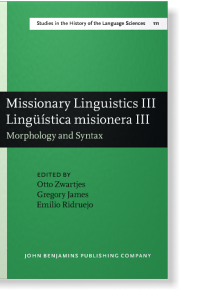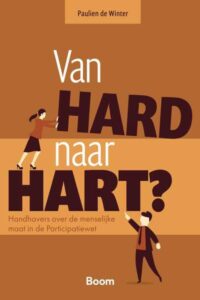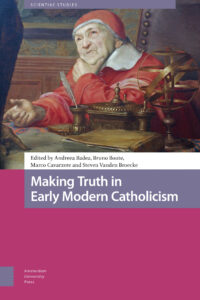About the book
This third volume on Missionary Linguistics focuses on morphology and syntax. It contains a selection of papers derived from the international conferences on missionary linguistics held in Hong Kong/Macau and Valladolid. As with the previous two volumes (2004, on general issues, and 2005, on orthography and phonology), this volume looks at methodology and descriptive techniques from a historical point of view, offering articles of interest to historiographers of linguistics, typologists, and descriptive linguists. It presents research into languages such as Tarasco (Pur’épecha), Massachusett, Nahuatl, Conivo, Sipibo, Guaraní, Vietnamese, Tamil, Southern Min Chinese dialects, Mandarin Chinese, Arabic, Tagalog and other Austronesian languages, such as Yapese and Chamorro.
Get the book from Athenaeum Booksellers, Amsterdam’s largest independent bookstore.
About the project
The aim of this book project is to provide an integrated framework, analysis and evaluation of missionary grammars written in Portuguese in the colonial period. An interesting corpus of documented languages in the pre-modern period (16th – 18th century) is still extant, mainly Asian grammars and dictionaries of Japanese, Tamil, Konkani; Kipeá (Macro-Jê family), Tupinambá and the manuscript “lingua geral Amazônica” (Tupi-Guarani family) in Brazil, and Kimbundu (Angola). During my stay at NIAS I ‘discovered’ another source of the Portuguese tradition, a grammar of Nyungwe/Sena, a Bantu language found along the Zambezi river in Mozambique. This source casts new light on early-modern descriptions of Bantu languages. NIAS has played a very important role in my academic career. It gave me the opportunity to reflect upon my research and other academic activities, like teaching. The library assistance was excellent. Thanks to their support I could consult many sources I was searching



